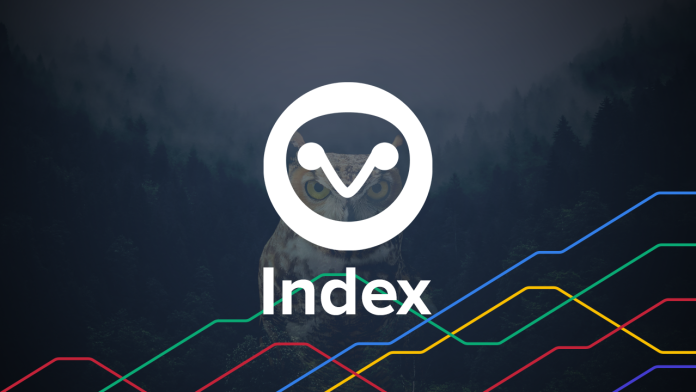tl;dr Summary: Index Coop, a decentralized and autonomous asset manager, just released their NFT Index token called JPG. The token, traded on decentralized exchanges like Uniswap, provides the JPG token holder exposure to the trends of the NFT market. In short, the token’s value fluctuates based on changes in the underlying NFT’s it derives its value from.
On April 19, Index Coop announced the launch of their NFT Index token, JPG. This token represents one of the first NFT index tokens ever created and looks to provide token holders with a broad exposure to the NFT market. While this isn’t the first index token created, it is the first to provide such a broad exposure to the overall NFT industry.
In the words of the Index Coop Methodologist who designed JPG, “JPG is a game-changer.”
But if you are anything like me, then you might still be stuck on what the heck an index is… So, in this article, let’s break down: what is an Index? What does Index Coop do? And what about this NFT Index token is so special?
Indexes 101
An index, in its most basic definition, is a measure of something. The word ‘index’ is commonly used in the world of capital markets to describe a type of investment vehicle. For example, you might be interested in investing in semiconductors because you have been hearing a lot about them in the news but don’t really want to invest in one specific company. There is an index fund that allows you to put your assets in one fund that then distributes your assets to multiple semiconductor companies. Simply put, an index fund is a basket of securities that attempts to track the performance of something.
So now that you understand what an index is, how does it work? Well, if you invest money in an index, the fund will take the money you gave it and allocate it to the different companies that they feel appropriately measure a trend/market. In the same manner, if you take your money out, then the fund sells positions based on its allocations and provides that money back to the individual.
JPG Index Token
Index Coop takes the concept of an index from traditional finance and offers a Web 3.0 version of the investment vehicle on the blockchain. By capturing the upward movement of different areas in the crypto space through an index token, Index Coop believes it can provide crypto natives and newbies with an easy-to-understand, secure and tax efficient way to participate in crypto investing. So then, how does this apply to their newly launched NFT index token?
The JPG index token created by Index Coop attempts to do the same thing as traditional indices but is innovative in a few ways.
1) Tokenized: The index is a token rather than security you can buy on the stock market
2) Liquidity: The index provides a measure of a largely illiquid market
3) Index Weights: The holders of the JPG index token can vote on allocations
The JPG index token accomplishes this by reinvesting the money it receives from the token into other tokens related to the NFT market. While an NFT index would usually be impossible to create because of an inability to quickly buy and sell NFTs when users invest or sell JPG tokens, Index Coop is able to guarantee liquidity through new protocols. Thus, JPG is backed by ownership in fractional NFTs, NFT liquidity vaults, NFT curation DAOs, NFT currencies, and wrapped NFTs. For example, DeFi projects such as NFTX, WHALE and Jenny DAO help make up the allocations of the JPG index token.
As a result, JPG index token can now provide its owners exposure to rare and expensive NFTs such as CryptoPunks, Bored Ape Yacht Club, Meebits and Tyler Hobbs’s Fidenza while still allowing Index Coop to quickly buy and sell the index’s underlying tokens. This second component of quickly buying and selling the underlying tokens creates liquidity for Index Coop so that token owners don’t have restrictions on when they want to exchange JPG.
On top of this, owners of the token get to vote on the allocation of the JPG index token. If a stakeholder in the coin is unhappy with how much of the index is weighted towards WHALE, then they can vote to reduce that weighting. This voting dynamic gives users more agency when engaging with JPG so they can make the token into the digital security that they desire.
NFTI
While Index Coop has pioneered the space of Index Tokens, they are by no means the only player in the space. NFTI is another index token that has emerged in 2022 which has shown the promising potential of tokenized digital securities.
Similar to JPG, NFTI attempts to track the performance within the NFT industry. It does this by weighting their index based on each token’s circulating supply and liquidity value. This provides a somewhat larger scope to their index as it not only includes NFT ownership, but it also provides weighting on the technologies that support NFTs as well.
To further differentiate themselves, NFTI has also allowed their token to be redeemable by owners. This specific feature allows owners to exchange their NFTI for a token that is weighted in their index. This interchangeability is a unique feature to NFTI and showcases how tokens can further drive innovation in indexes.

Conclusion:
If you look up Art Index Fund today, the closest thing you can find to an Art Index Fund on Web 2.0 are those offered by Masterworks or Yieldstreet. For both of these companies, the best they can offer an investor is a security that represents fractional ownership of individual work of art. They can’t offer a broad Art Index Fund because there is no way to directly back their security in the value of a broad range of art pieces.
While the nuance of an NFT Index might not immediately sound impressive, the challenge that Index Coop and NFTI continue to solve is one that Web 2.0 has struggled with for years. Innovations like this showcase the potential of Web 3.0 to continuously innovate around challenges in Web 2.0 no matter how small they are.






